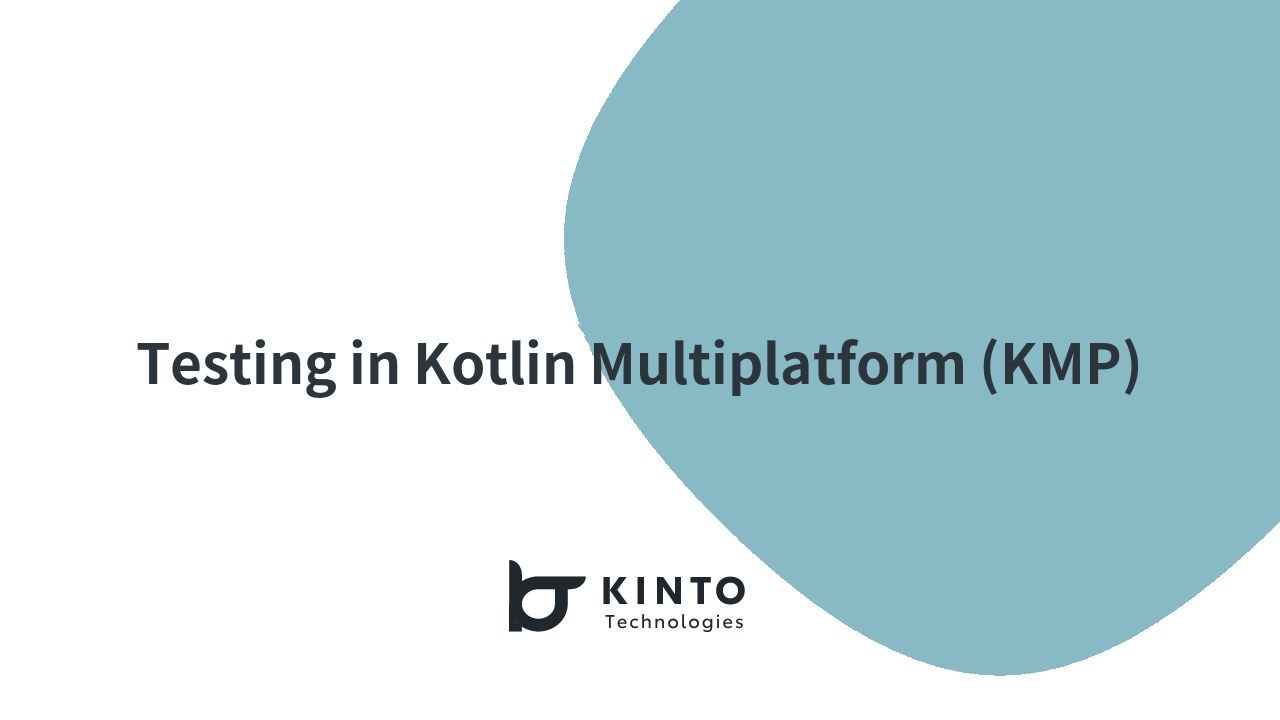UdemyでCoroutinesとFlowの講座を受けました

はじめに
こんにちは!モバイルアプリ開発Gにてmy routeアプリのAndroid側の開発を担当しておりますRomieです。
KINTOテクノロジーズ株式会社(以下KTC)では、Udemy Businessのアカウントを利用して様々な講座を受講することができます!
今回はKotlin Coroutines and Flow for Android Developmentを受講しました。
Androidにおける非同期処理およびCoroutinesとFlowの理解を深めるために基本的な部分をAll Englishで解説していく講座です。
学習した感想
率直な感想は以下の通りです。
- 英語は非常に平坦でわかりやすい
- Androidの用語を除いて難しい単語がほとんどない
ですので、 初学者から抜け出してしっかり非同期処理およびCoroutinesとFlowを勉強されたい方・Androidの基礎とともに英語の勉強もされたい方には非常におすすめです!
印象に残った項目
CoroutinesとFlowは従来の非同期処理と異なりメインスレッド以外で実行され、非同期処理をより簡潔に記述することができます。
また、CoroutinesとFlowはKotlinの標準ライブラリに含まれているため、追加のライブラリを導入する必要がありません。
ここだけ取り上げても非常に大きなメリットがありますね!
全て基本的な形式になりますが、備忘録も兼ねて以下に記載します。
Callback
Callbackは基本的な非同期処理ですね。onResponse/onFailureで処理を分岐させることができます。
exampleCallback1()!!.enqueue(object : Callback<Any> {
override fun onFailure(call: Call<Any>, t: Throwable) {
println("exampleCallback1 : Error - onFailure")
}
override fun onResponse() {
if (response.isSuccessful) {
println("exampleCallback1 : Success")
} else {
println("exampleCallback1 : Error - isSuccessful is false")
}
}
})
RxJava
RxJavaはsubscribeByの中でonSuccess/onErrorで処理を分岐させることができます。
exampleRxJava()
.flatMap { result -> example2() }
.subscribeOn(Schedulers.io())
.observeOn(AndroidSchedulers.mainThread())
.subscribeBy(
onSuccess = {
println("Success")
},
onError = {
println("Error")
}
)
.addTo(CompositeDisposable())
async/await
async/awaitで非同期処理を行い、awaitAllで結果をまとめて処理を行います。こちらは従来の非同期処理の中でもよく使われる形式ですね。
viewModelScope.launch {
try {
val resultAsyncAwait =
awaitAll(
async { exampleAsyncAwait1() },
async { exampleAsyncAwait2() },
async { exampleAsyncAwait3() }
)
println("Success")
} catch (exception: Exception) {
println("Error")
}
}
viewModelScope.launch {
try {
val resultAsyncAwait = exampleAsyncAwait()
.map { result ->
async { multiExampleAsyncAwait() }
}.awaitAll()
println("Success")
} catch (exception: Exception) {
println("Error")
}
}
withTimeout
withTimeoutではタイムアウト処理を行います。withTimeoutではタイムアウト時に例外が発生します。
viewModelScope.launch {
try {
withTimeout(1000L) {
exampleWithTimeout()
}
println("Success")
} catch (timeoutCancellationException: TimeoutCancellationException) {
println("タイムアウトによるError")
} catch (exception: Exception) {
println("Error")
}
}
withTimeoutOrNull
withTimeoutOrNullもタイムアウト処理ですが、withTimeoutと異なりwithTimeoutOrNullではタイムアウト時にnullを返します。
viewModelScope.launch {
try {
val resultWithTimeoutOrNull = withTimeoutOrNull(timeout) {
exampleWithTimeoutOrNull()
}
if (resultWithTimeoutOrNull != null) {
println("Success")
} else {
println("タイムアウトによるError")
}
} catch (exception: Exception) {
println("Error")
}
}
RoomとCoroutinesによるデータベース操作
RoomとCoroutinesを組み合わせた処理ではデータベースが空かどうかを確認し、データベースに値があればinsertします。
現在のデータベースの値を取得する処理は例外が発生する可能性があるため、try/catchで囲んでいます。
現在Androidの非同期処理ではFlowと共に非常に多くの場面で使われているのではないでしょうか。
viewModelScope.launch {
val resultDatabaseRoom = databaseRoom.exac()
if (resultDatabaseRoom.isEmpty()) {
println("データベースは空です")
} else {
println("データベースに値あり")
}
try {
val examDataList = getValue()
for (resultExam in examDataList) {
database.insert(resultExam)
}
println("Success")
} catch (exception: Exception) {
println("Error")
}
}
Flow
基本的なFlowですね。onStartで初期値をemitし、onCompletionで処理が完了したことをログに出力します。
sealed class UiState {
data object Loading : UiState()
data class Success(val stockList: List<Stock>) : UiState()
data class Error(val message: String) : UiState()
}
val anythingAsLiveData: LiveData<UiState> = anythingDataSource
.map { anyList ->
UiState.Success(anyList) as UiState
}
.onStart {
emit(UiState.Loading)
}
.onCompletion {
Timber.tag("Flow").d("Flow has completed.")
}
.asLiveData()
SharedFlow/StateFlow
SharedFlow/StateFlowはFlowの一種です。stateInでStateFlowに変換します。
FlowとSharedFlowの違いは、Flowがemitされた値を保持しないのに対し、SharedFlowはemitされた値を保持する点です。
StateFlowは他の2つと異なり、初期値を持ち自分自身で値の取得ができます。
SharedFlowはStateFlowと同じように値を保持しますが、複数のコレクターが値を受け取ることができます。
sealed class UiState {
data object Loading : UiState()
data class Success(val stockList: List<Stock>) : UiState()
data class Error(val message: String) : UiState()
}
val anythingAsFlow: StateFlow<UiState> = anythingDataSource
.map { anyList ->
UiState.Success(anyList) as UiState
}
.onCompletion {
Timber.tag("Flow").d("Flow has completed.")
}.stateIn(
scope = viewModelScope,
initialValue = UiState.Loading,
started = SharingStarted.WhileSubscribed(stopTimeoutMillis = 5000)
)
まとめ
内容自体は基本的な部分が多いですが、英語での解説が多かったため1周するのに時間がかかりました。
もっと非同期処理の全体像について理解したあとに2周目を行うと理解が深まるかと思います。
2周目では英語の勉強がメインになりそうですが、、
最後までお読みいただきありがとうございました!
関連記事 | Related Posts
We are hiring!
【プロジェクトマネージャー(iOS/Android/Flutter)】モバイルアプリ開発G/東京
モバイルアプリ開発GについてKINTOテクノロジーズにおける、モバイルアプリ開発のスペシャリストが集まっているグループです。KINTOやmy routeなどのサービスを開発・運用しているグループと協調しながら、品質の高いモバイルアプリを開発し、サービスの発展に貢献することを目標としています。
【ソフトウェアエンジニア(メンバークラス)】共通サービス開発G/東京・大阪・福岡
共通サービス開発グループについてWebサービスやモバイルアプリの開発において、必要となる共通機能=会員プラットフォームや決済プラットフォームなどの企画・開発を手がけるグループです。KINTOの名前が付くサービスやKINTOに関わりのあるサービスを同一のユーザーアカウントに対して提供し、より良いユーザー体験を実現できるよう、様々な共通機能や顧客基盤を構築していくことを目的としています。



